With such a diverse array of options available to meet every storage need, it can be overwhelming to select the perfect pallet racking system for your warehouse, so here's our guide to help you make an informed decision.
Pallet racking systems are the backbone of countless warehouses and distribution centers around the world. These versatile structures provide efficient storage solutions for palletised goods, optimising space and facilitating smooth operations. In this comprehensive guide, we’ll delve into the intricacies of pallet racking, covering everything from its components to different types and how to choose the right racking system for your needs.
What is pallet racking?
Pallet racking is a storage system designed to store palletised goods in a warehouse or distribution center. The system, consists of upright columns, horizontal beams, and optional accessories such as wire or timber decking. The primary purpose of pallet racking is to maximise vertical storage space while allowing easy access to stored items for loading and unloading using forklifts or other handling equipment.
There are various types of pallet racking systems available, which we will discuss below.

Key components of a pallet racking system
Before we dive into the various types of pallet racking, let’s first understand the key components that make up these systems:
- Frame / Uprights: These vertical columns serve as the support structure for the racking system. Uprights typically have holes or slots at regular intervals to accommodate beams.
- Beams: Horizontal load-bearing members that connect to the uprights, forming the shelves or levels where pallets are stored. Beams come in various lengths and weight capacities to suit different storage requirements.
- Wire Decking or Timber Decking: Optional decking placed on the beams to provide additional support for pallets and prevent items from falling through.
- Footplates: These are anchored to the floor to provide stability and support for the uprights.
- Bracing: Diagonal braces or cross beams that connect the uprights together, enhancing the overall stability and strength of the racking system.
- Locking / Safety Pins: Inserted into the upright frames and engage with the beams to secure them in place, preventing accidental dislodgment or displacement of the beam.
Types of Pallet Racking
Pallet racking systems can broadly be categorised into two main types based on their accessibility and storage density:
Direct Access Pallet Racking
- Adjustable Pallet Racking(APR): This is the most common type of direct access pallet racking. It allows for individual pallets to be accessed directly without moving others. Selective racking systems are versatile and suitable for warehouses with a wide variety of SKU (stock-keeping unit) requirements. They offer easy access to each pallet, making them ideal for businesses that prioritise quick retrieval of goods.
Adjustable Pallet Racking (APR)
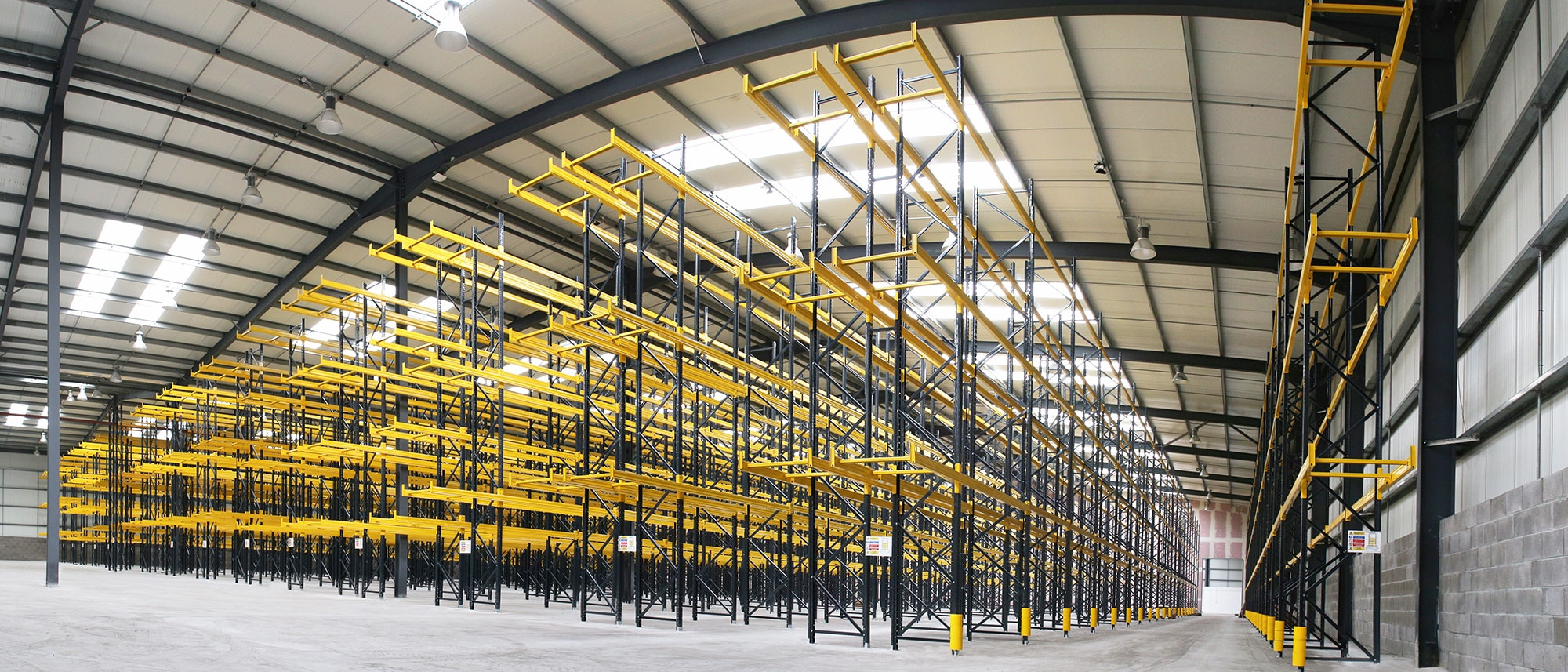
- Cantilever Racking: a specialised type of pallet racking system designed primarily for the storage of long, bulky, or irregularly shaped items that cannot be stored on traditional pallets. Unlike conventional pallet racking, which utilises horizontal beams to support pallets, cantilever racking features long, horizontal arms that extend from vertical columns.
Cantilever Racking
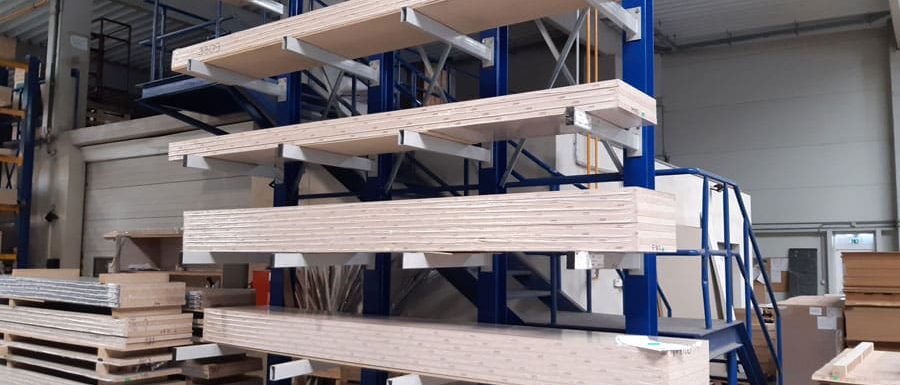
High-Density Pallet Racking Systems
- Mobile Racking Systems: Unlike traditional static pallet racking, mobile pallet racking is mounted on a steel framed base. This racking system is installed over guided mobile bases that slide laterally, thus eliminating the need for aisles, which open up only when accessed.
Mobile Racking
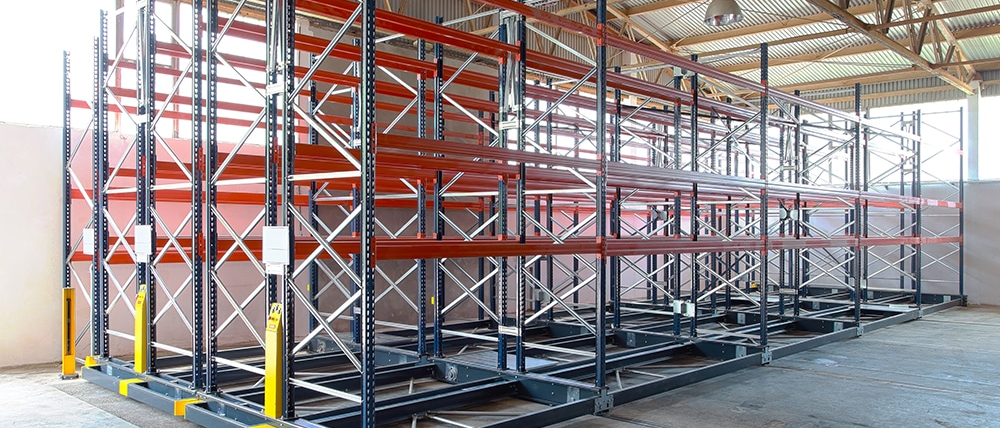
- Drive-In Racking: Drive-in Racking, also know as drive-through racking, allows forklift trucks to drive directly into the pallet racking , providing easy access to stored pallets. This efficient design eliminates the need for aisles between racks, maximising storage space for products with a low inventory turnover rate.
Drive-In Racking
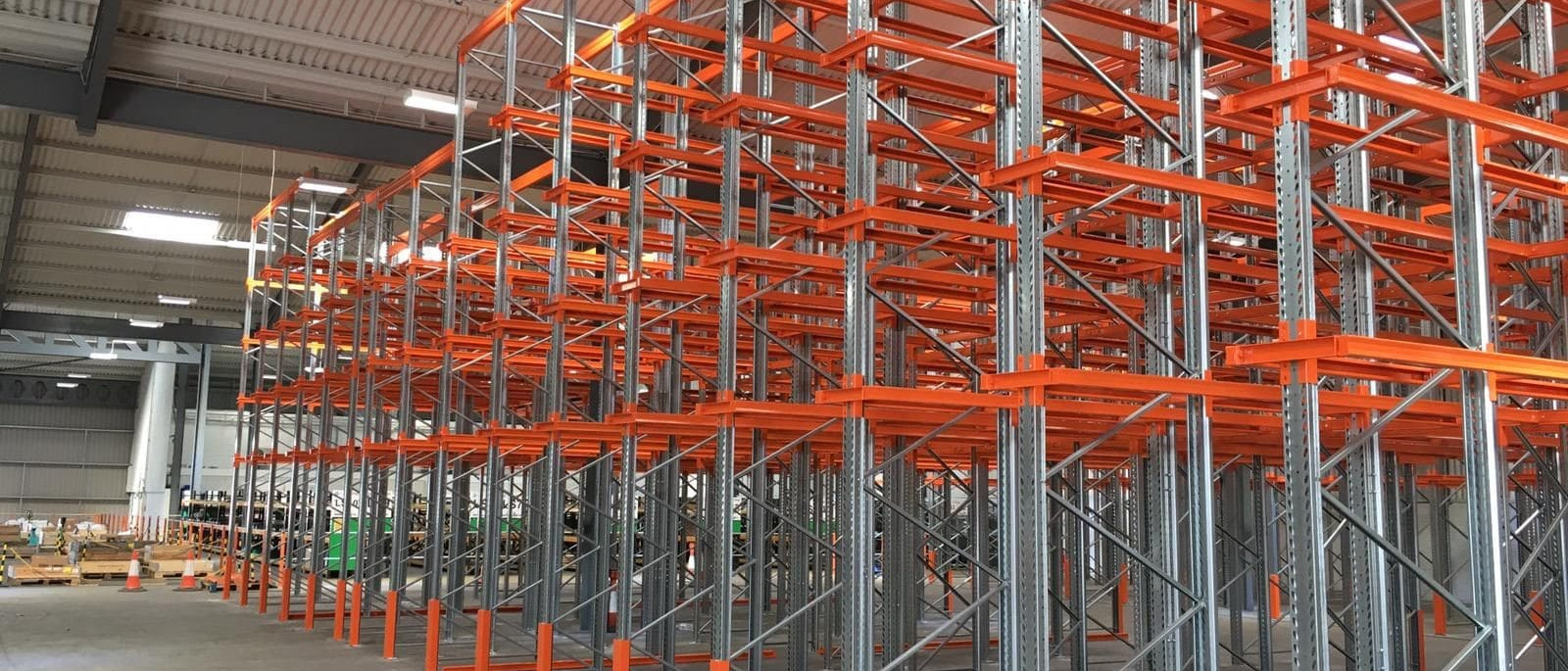
- Push Back Racking: Push back racking is a type of selective pallet racking system used in warehouses to maximise storage density while maintaining selectivity and ease of access to stored goods. Ideal if you’re storing bulk goods on pallets according to the Last-in, First-out (LIFO) principle.
Push Back Racking
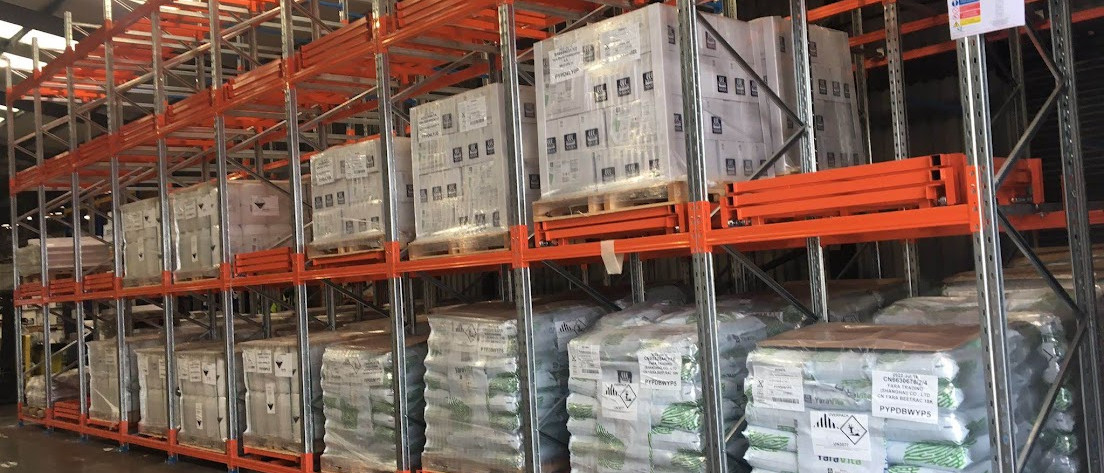
- Carton Flow Live Shelving: This system utilises gravity to move products seamlessly from the loading end to the picking end, reducing the need for manual handling and increasing picking efficiency and is particularly effective for products with a short shelf life, where the first-in-first-out (FIFO) system is crucial. It’s commonly used for cartons, boxes, and smaller items.
Carton Flow Racking
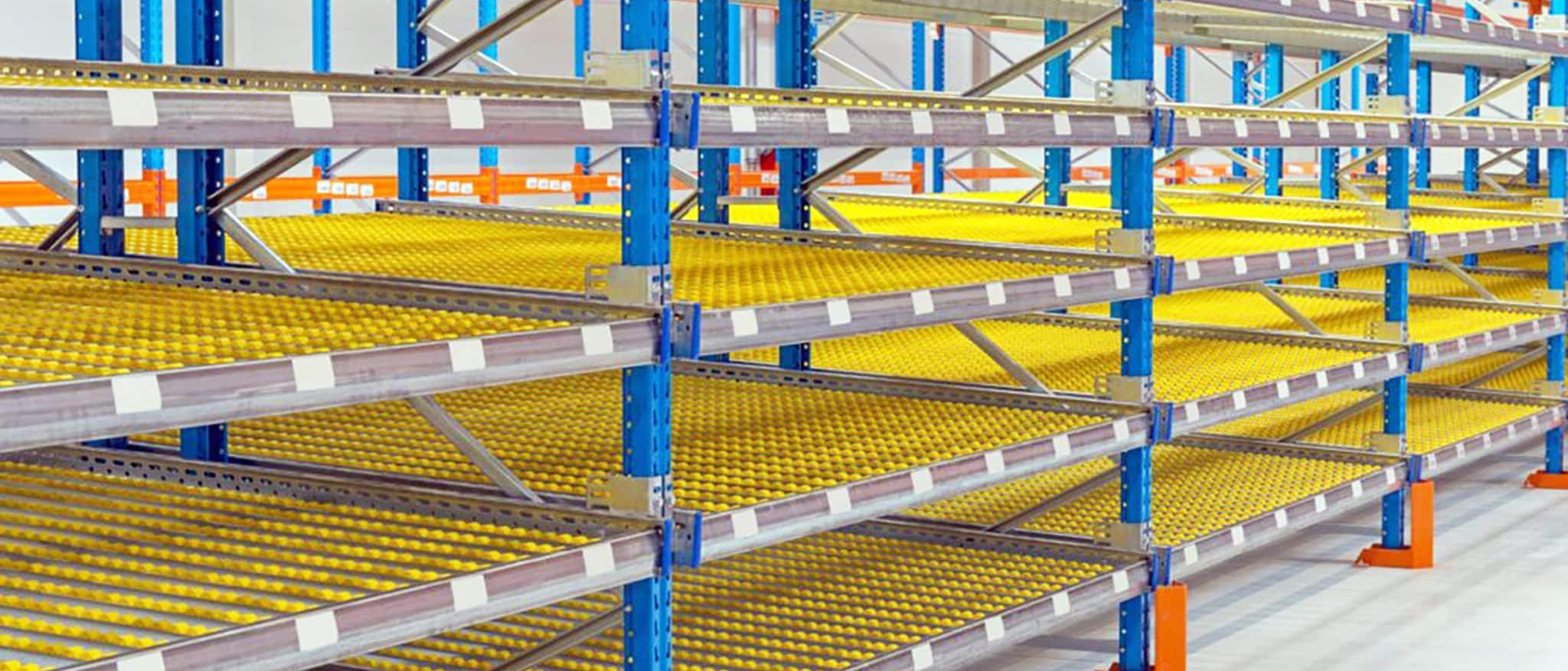
How to choose the right pallet racking system
When it comes to choosing a pallet racking system for your warehouse or distribution centre, several considerations come into play. First off, you’ve got to assess your storage requirements. Take a good look at the size, weight, and volume of your inventory, including any items with special handling needs. This will help determine the type of racking system that can best accommodate your goods.
Accessibility is another key factor to think about. Do you need direct access to each pallet, or are you okay with sacrificing a bit of accessibility for higher storage density? Understanding your accessibility needs will steer you towards the right type of racking system that balances storage efficiency with ease of access.
Lastly, don’t forget about your warehouse layout and future growth plans. Consider the dimensions of your warehouse, including ceiling height and aisle width, to make sure you’re optimising space utilisation. And as your inventory grows over time, ensure that the racking system you choose can adapt to accommodate your evolving needs without requiring a complete overhaul. Taking all these factors into account will help you make an informed decision and select a pallet racking system that maximises efficiency and productivity in your warehouse or distribution centre.
